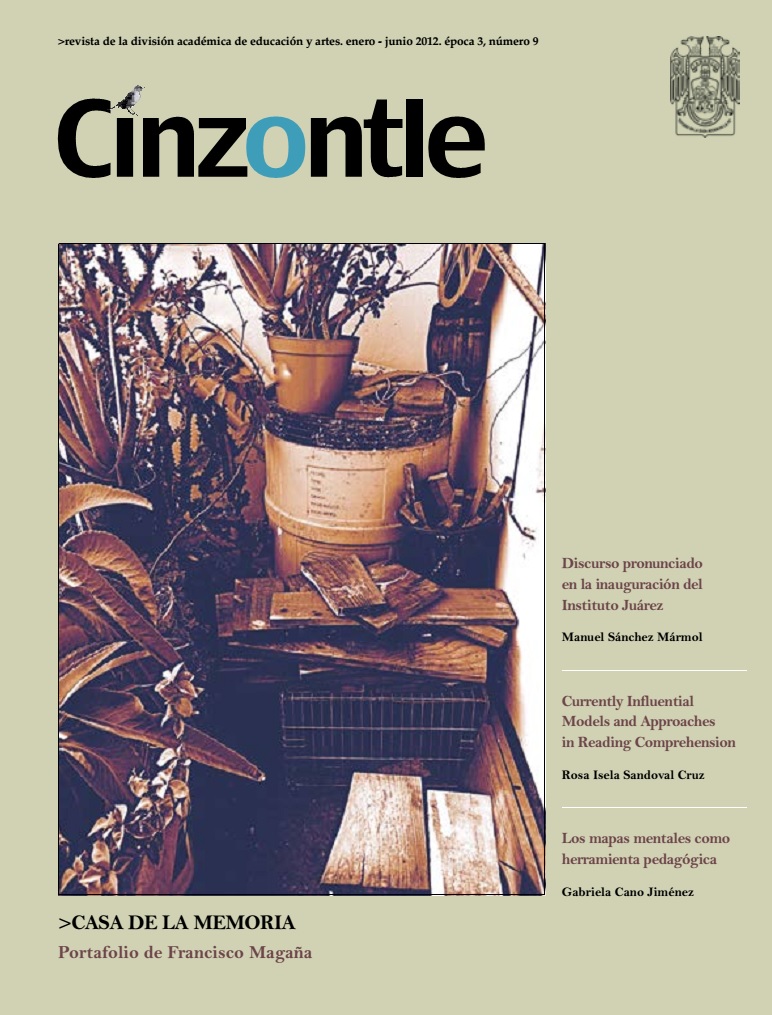Currently influential models and approaches in reading comprehension
Abstract
Reading comprehension is a national problem in Mexico (Díaz Gutiérrez et al., 2007) and specifically for UJAT students reading in English as a Foreign Language (Perales Escudero, 2011). In order to contribute to a greater understanding of this problem, this paper reviews some influential theoretical models of comprehension: the Psycholinguistic Guessing Game (PGG), the Interactive Compensatory Model, and the Construction-Integration (C-I) model.References
Díaz Gutiérrez, M.A., Flores Vázquez, G., & Martínez Rizo, F. (2007). PISA 2006 en México. México, DF: INEE.
Grabe, W. (2009). Reading in a Second Language: Moving from Theory to Practice. Cambridge: Cambridge University Press.
Han, Z. & D‘Angelo, A. (2007). “Balancing between comprehension and acquisition: Proposing a dual approach”. In Z. Han, N.J. Anderson & D. Freeman (Eds.), Second Language Reading Research and Instruction: Crossing the Boundaries, 173-191. Ann Arbor, MI: The University of Michigan Press.
Kintsch, W. (1998). Comprehension: A framework for cognition. New York: Cambridge University Press. McNamara, D.S. &Kintsch, W. (1996). “Learning from texts: Effects of prior knowledge and text coherence”. Discourse Processes 22, 247-288.
Nassaji, H. (2007). “Schema theory and knowledge-based processes in second language reading comprehension: A need for alternative perspectives”. Language Learning, 57, 79-113.
PeralesEscudero, M.D. (2011). “Teaching and learning EFL critical reading at a mexican university: An Emergentist Case Study”. Unpublished PhD dissertation.Ann Arbor, MI: University of Michigan.
Pressley, M. (2002). Reading Instruction that Works: The Case for Balanced Teaching. New York: The Guilford Press.
Stanovich, K. (2000). [1980]. “Toward an interactive-compensatory model of individual differences in the development of reading fluency”. Reading Research Quarterly 21, 360-407.


